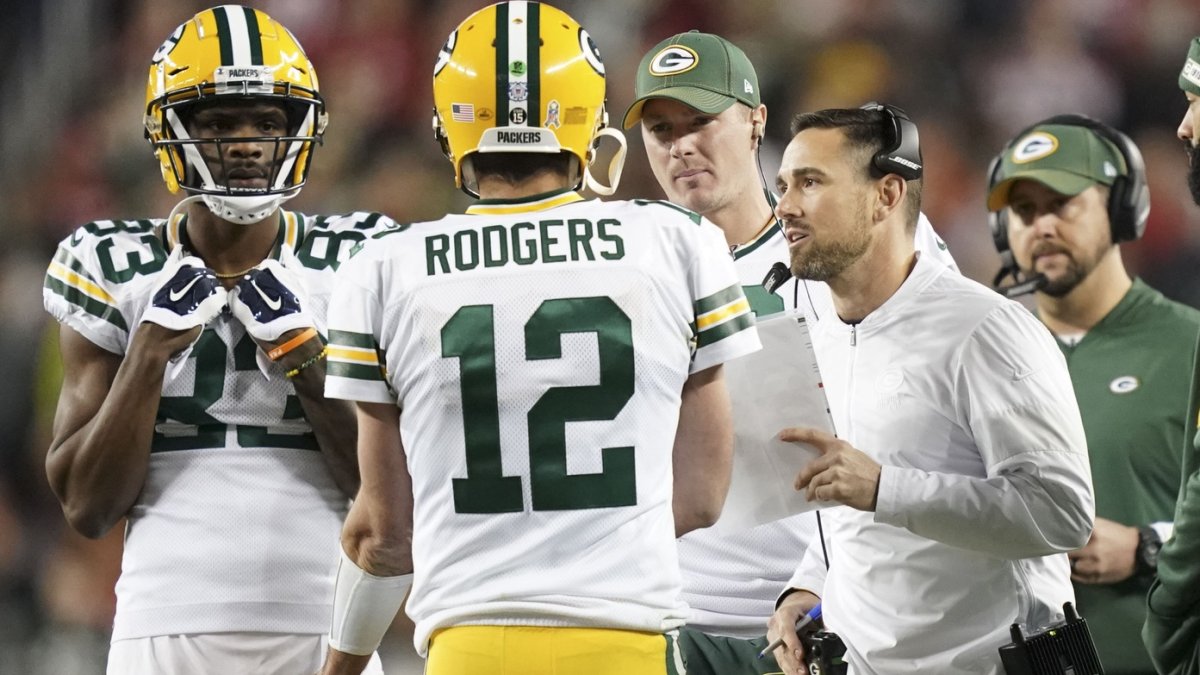It is often said that the NFL is a copycat league. The sentiment is understandable because a good idea in many walks of life — once out in the open — often gets absorbed quickly into the everyday workings of the industry and eventually becomes incorporated into the norm.
There are not many things more out in the open than football, and while the league and its inhabitants can be stubborn, there are not enough degrees of separation between coaches and players for ideas to remain concentrated for too long.
[Editor's Note: Subscribe to PFF ELITE today to gain access to PFF’s Premium Stats and new Player Grades experience in addition to the 2020 NFL Draft Guide, 2020 Fantasy Rookie Scouting Report, PFF Greenline, all of PFF’s premium article content and more.]
Thus, it would make sense at first blush that the Green Bay Packers, after losing a chance at earning the No. 1 seed in the NFC due to a 37-8 loss in Santa Clara in late November, as well as a chance at the Super Bowl via a 37-20 loss at the same venue in January, would want to emulate the San Francisco 49ers‘ approach to offensive football. Kyle Shanahan’s offenses have represented the NFC in two of the past four Super Bowls, with his 2016 Falcons offense handling the Packers in their previous appearance, 44-21, in the last game at the old Georgia Dome.
Green Bay got to work toward those ends last month, drafting the talented but deeply flawed Jordan Love to eventually replace future Hall of Famer Aaron Rodgers and his supposed lack of adherence to offensive structure, the bruising A.J. Dillon to join an already-good backfield, and Cincinnati product Josiah Deguara to give them what they think 49ers have in Kyle Juszczyk. Three interior linemen were selected later in the process, two of whom were not even on the PFF Big Board.
Will this facelift work? After almost three decades of Hall of Fame-caliber players at the most important position in football, will de-emphasizing the position lead to the success we’ve seen at times with Shanahan? My money is on “no,” and here are a few reasons:
It’s Difficult to Actually Pull Off Copycat Schemes
There’s a pretty systematic way to model what it means to “copycat” another play caller’s offense. We’ve written about modeling scheme before, which generally amounts to using principal component analysis on play-by-play data — modeling how often a team uses play action, different run concepts, personnel groups and the like. Generally speaking, changing schemes dramatically does have a small positive impact on offenses, but it’s far from a sure thing and confounds often with personnel change or just reversion to the mean.
Exclusive content for premium subscribers

WANT TO KEEP READING?
Dominate Fantasy Football & Betting with AI-Powered Data & Tools Trusted By All 32 Teams
Already have a subscription? Log in



 © 2025 PFF - all rights reserved.
© 2025 PFF - all rights reserved.